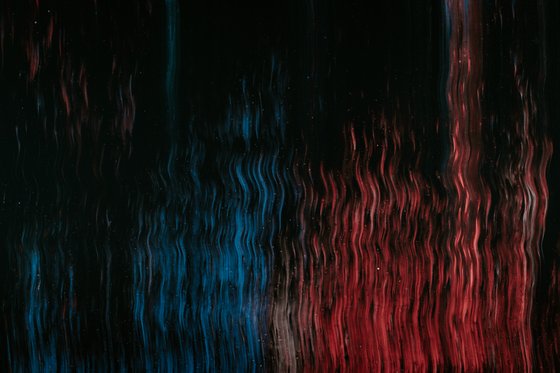Between the Should and the Unknown: A Modern Interdisciplinary Map of the Mind
Your brain means well - but it's kind of a control freak. This essay takes you from the nagging “shoulds” in your head to Keats’s poetic chill and into the wild terrain of modern neuroscience. What if the problem isn’t that you’re uncertain, but that you think you shouldn’t be? Literature, philosophy, and your cortex all agree: it’s okay not to know. In fact, it might be the most human thing about you.
Anweshan Ghosh
8/5/20253 min read


There is a voice many of us carry - a quiet, persistent murmur that threads itself into thought: "You should already know. You should be better. You shouldn’t feel this way." Karen Horney named this inner compulsion the "tyranny of the shoulds," a phrase that captures the way we fracture ourselves chasing an imagined perfection. These shoulds, she argued, arise from early emotional wounds - conditional affection, social comparison, subtle rejections - and later take root in a culture that rewards certainty, productivity, and control.
Yet long before Horney gave language to these compulsions, the poet John Keats offered a different way to meet the unknown. He called it "negative capability": the capacity to rest in "uncertainties, mysteries, doubts, without any irritable reaching after fact and reason." In his letters, Keats described this not as weakness but as a rich inner strength - the poet's capacity to dwell where logic falters and ambiguity deepens experience. Where the "shoulds" push us to escape uncertainty, negative capability invites us to stay.
Strikingly, modern neuroscience has begun to chart this same landscape - not in metaphor, but in circuitry. The human brain, contemporary models reveal, is not simply reactive. It is predictive. According to the predictive processing framework (Clark, 2013; Friston, 2010), perception itself is an active construction. The brain is constantly anticipating the world, updating its models with every blink, breath, and deviation. We live not just in the world, but in the brain's best guess of it.
This ability to predict is vital. It helps us avoid harm, navigate complexity, and make swift decisions. But prediction has a price. When reality contradicts the brain's expectations, it generates "prediction error" - a signal that something is amiss. The more intolerant we are of this error, the more urgently we seek to resolve it. In this light, the "shoulds" are not merely moral pressures, but neural attempts to quiet the discomfort of not knowing.
This discomfort can become a loop. The anterior cingulate cortex (ACC), which detects conflict and errors, lights up in these moments. The default mode network (DMN), often engaged during self-reflection, begins spinning narratives about what went wrong and what should have been. Rumination ensues. Self-criticism sharpens. The brain becomes a hall of mirrors, bouncing between memory and imagined ideal.
But this is not the whole story. Our brains also hold the architecture for something more expansive. The ventromedial prefrontal cortex (vmPFC), a region linked to emotional flexibility and integration, plays a crucial role in how we manage ambiguity. It helps us weigh competing values, reflect without panic, and temper impulsive certainty. In tandem, the insula offers a felt map of our internal world - heartbeat, breath, gut instinct - grounding us in the body when the mind spins stories.
Recent research underscores this capacity. A 2021 study in Nature Human Behaviour (Zajkowski et al.) demonstrated how the vmPFC dynamically codes for uncertainty during exploration, rather than collapsing under it. Other studies show that mindfulness practices - brief and sustained - can enhance vmPFC-insula connectivity (Taren et al., 2015), effectively rewiring the brain toward patience with ambiguity. In clinical contexts, disrupted vmPFC-insula pathways correlate with heightened anxiety and an intolerance of uncertainty (Pittig et al., 2023), offering a tangible bridge between inner narrative and neural pattern.
These insights echo something literature and philosophy have long intuited: that ambiguity is not an error to be corrected, but a condition to be inhabited. Simone de Beauvoir saw ambiguity as the core of the human condition. Nietzsche refused the safety of singular truths, instead championing multiplicity. Hamlet's indecision, Mrs. Dalloway's introspection, Raskolnikov's torment - these characters endure because they mirror our own dance with the unresolved.
So what does this mean for the self caught between the should and the unknown? It means that our struggle is neither pathology nor weakness. It is a feature of consciousness. We are wired to seek control, and yet we flourish when we allow openness. The task, then, is not to eliminate the shoulds or exalt uncertainty, but to learn how to move between them. To let the brain predict, and also to let it pause. To notice the error signal - and breathe.
Such movement is not automatic. It requires practice. Mindfulness, literature, therapy, and creative engagement all offer ways to soften rigid narratives and cultivate the space Keats described. These are not luxuries; they are neural training grounds. They teach us how to stay - gently, curiously - in the places we once fled from.
In the end, we are animals of anticipation, living in bodies built for surprise. The most profound aspects of life - grief, love, wonder, identity - refuse resolution. To be fully human may not mean finding clarity, but learning to rest where clarity has not yet arrived. And there, in that fragile, luminous space between control and surrender, something deeper than certainty might begin to unfold.
